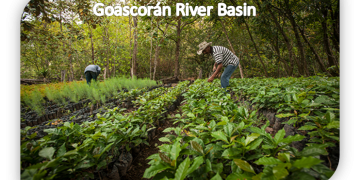Fostering the integration of ABS into National Biodiversity Strategy and Action Plans (NBSAP)
Speaker Secretariat CBD
Hartmut Meyer
REality Check in the field
Hartmut Meyer
Products from biological resources
Hartmut Meyer
This building block supports the integration of ABS and biotrade into National Biodiversity Strategies and Action Plans (NBSAPs), aligning them with the Global Biodiversity Framework - particularly Target 13 - and fostering synergies with other instruments, such as the International Treaty on Plant Genetic Resources for Food and Agriculture.
ABS mainstreaming involves embedding ABS into policies and plans across sectors such as trade, agriculture, health, finance, and research, rather than limiting its implementation to conservation authorities. At the 13th Pan-African ABS and Biotrade Workshop, participants discussed challenges, including limited funding, complex regulations, and insufficient involvement of non-environmental ministries. They explored Whole-of-Government and Whole-of-Society approaches, with a strong focus on private sector engagement in valorisation to generate socio-economic benefits.
Country examples, such as Uganda’s multisectoral working group involving local authorities, NGOs, IPLCs, and businesses, showed how early stakeholder mapping, integration into national development plans, and cross-sector collaboration can make ABS integration into NBSAPs more practical, inclusive, and impactful.
Success was supported by an interactive format combining expert inputs, panel discussions, and concrete country cases. Contributions from organisations such as FAO and UNEP broadened perspectives. Building on outcomes from a previous workshop ensured continuity, while structured guiding questions helped participants identify challenges, and to align ABS with other instruments, (such as the International Treaty on Plant Genetic Resources for Food and Agriculture) and define practical steps for mainstreaming in their national contexts.
Mainstreaming ABS into NBSAPs is most effective when positioned as both a conservation tool and an economic opportunity. Workshop discussions showed that broader stakeholder involvement is essential: it goes beyond ministries for environment or conservation and includes sectors such as trade, agriculture, health, finance, research, and users such as the private sector and research institutions.
Synergies with the International Treaty on Plant Genetic Resources for Food and Agriculture can strengthen coherence and align benefit-sharing across instruments. Early stakeholder mapping involving local authorities, IPLCs, NGOs, and businesses builds ownership and helps address monitoring and data gaps.
Valorisation strategies, industry-wide agreements, and Whole-of-Government and Whole-of-Society approaches ensure ABS is embedded in business models, policy frameworks, and community initiatives, creating sustainable value chains and fostering long-term ABS integration.
